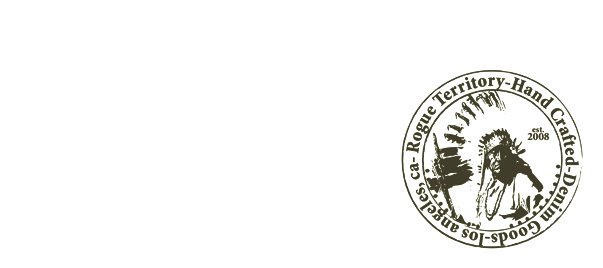First off, in the denim community this term can be spelled one of 2 ways either selvage or selvedge both mean the same thing.
Argument:
I'm not going to try and sell anyone on Selvage Denim, instead I thought it'd be best to try and educate you all on some of the products that are out there...please let me know if this is at all confusing.
The Information:
Selvage or Selvedge is the term given to the uncut edge of the fabric which is on the right- and left-hand edges as it comes out of the loom. As such it is 'finished' and will not fray because the weft threads double back on themselves. We can also refer to this finished edge as the "self-edge". So, the term selvage can be applied to any fabric that has its edges finished by the loom.
Warp: Yarn that runs parallel to selvedge. In denim, it’s dyed indigo.
Weft: Weft, or filling yarn, runs from selvedge at right angles to warp yearn. In denim, this yarn is left a natural, undyed color.
A Brief History:
Denim hits the blue collar scene in a big way at the turn of the 20th century. This fabric was a favorite of wranglers, cowboys, railroad workers, and miners alike. The fabric proved to be resilient to say the least. As demand for dungarees and bib-overalls ("Union-alls") increased so did the competition. At this time there were only a handful of competitors and an even fewer number of mills that produced this wonder fabric. The top mill was Cone Mills located in South Carolina. The top players in the denim industry were Levis Strauss, Lee Jeans, Blue Bell, and a few others such as Can't Bust'Em Jeans, but the first three are the major competitors. Since Cone was the major supplier it was imperative that they had a way to distinguish their clients product, thus they started using different color stripes in the finished edges of the fabric, what we all know now as the selvage. This distinguishing characteristic also proved to be a great marketing tool. Levis was the trailblazer and chose to use a red and white striped selvage, Lee used a green and white stripe, and Blue Bell or Wrangler (as we know them today) a yellow and white stripe. Brand recognition had been established and loyal customers lived and died by their denim. This was the beginning of denims amazing transformation. Coming soon, denim's Golden Age...
Until then here is some examples of selvage denim (pics taken from Blue in Green)








2 comments:
lovin' the blog! it's educational and captivating.....can't wait for part duex! <3
cant bust 'em jeans are by Lee itself...
Post a Comment